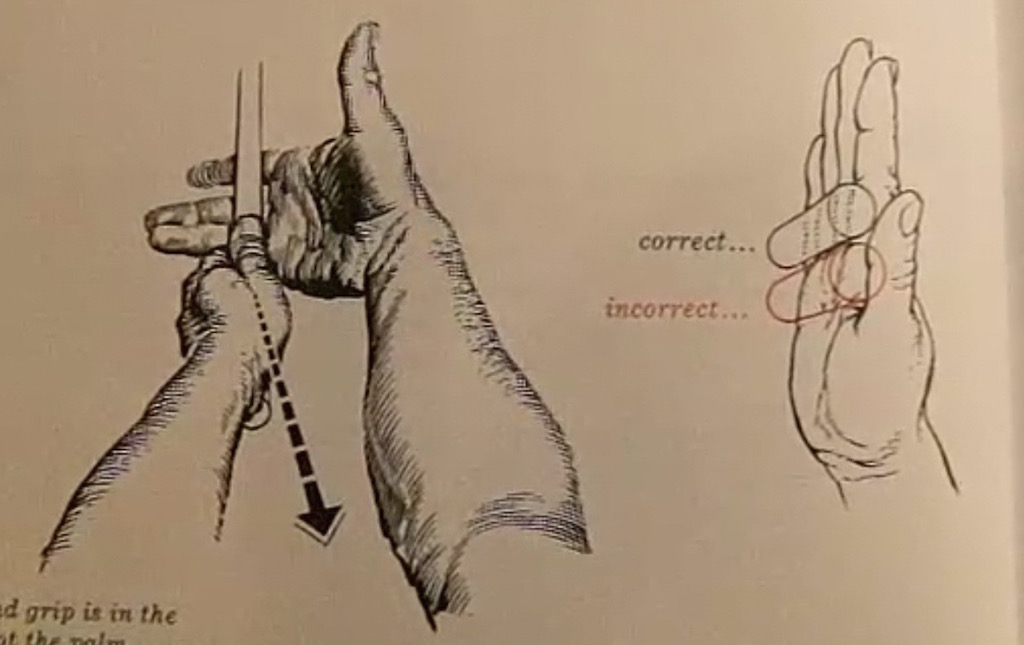Instruction
The Wedge Guy: Making the short ones

One of the most frustrating things in golf has to be missing short putts. I’m talking about putts under six feet for the most part here, but particularly those inside of four. You hit a great approach to set up a short birdie…and then miss it. Or you make a great pitch or chip to save par — or even bogey — and it doesn’t go in.
When we face any short putt, several things happen to get in the way of our success. First, because we feel like we “have” to make this, we naturally tense up, which mostly manifests in a firmer hold on the putter, maybe even the proverbial “death grip” (appropriately named). That firmer hold is generally concentrated in the thumbs and forefingers, which then tightens up the forearms, shoulders and everything else. So the first tip is:
- Lighten up. When you take your grip on the putter, focus on how tight you are holding it, and relax. Feel like you are holding the putter in the fingers, with your thumbs only resting lightly as possible on the top of the putter. To see the difference, try this: while you are sitting there, clench your thumb and forefinger together and move your hand around by flexing your wrist – feel the tension in your forearm? Now, relax your thumb and forefinger completely and squeeze only your last three fingers in your hand and move it around again. See how much more you are able to move? Actually, that little tip applies to all your shots, but particularly the short putts. A light grip, with the only pressure in the last three fingers, sets up a smooth stroke and good touch.
The second thing that happens when we have a short putt is we often allow negative thoughts to creep in… “Don’t miss this”…“What if I miss it?”…“I have to make this”…all those put undue pressure on us and make it that much harder to make a good stroke.
So, the second tip is:
- Chill out. Just allow yourself a break here. You have hit a great shot to get it this close, so allow yourself to believe that you are going to make this. Relax, shake out the nerves, and think only positive thoughts while you are waiting your turn to putt. And you know what? If you do miss it, it’s not the end of the world. It’s just one shot. So chill out and have fun…and make more short putts.
Finally, we often tend to get so focused on “just make a good stroke” that we get all wrapped up in mechanical thoughts. Forget those. Focus your vision intently and completely on the target. Most short putts are pretty darn straight, or maybe just on or outside the high side. My favorite thought on these putts comes from a favorite movie, The Patriot.
- Aim small, miss small. Early in the movie, Gibson’s character took his two very young sons and several rifles and went to rescue his older son. He coached them to “Remember what I told you?” and the son replied “Yes sir. Aim small, miss small.” That’s great advice on short putts. Instead of focusing your eyes on the hole, pick a specific spec of dirt or grass in the back edge, or inside one lip or the other – on whatever line you want the putt to start. Don’t just look at the hole…focus intently on that very specific spot. That intensifies your visual acuity and allows your natural eye-hand coordination to work at its very best.
So, there you have the three keys to making more short putts:
- Lighten up
- Chill out
- Aim small, miss small
I hope this helps all of you make more of them.
More from the Wedge Guy
- The Wedge Guy: Are you making the game too hard?
- The Wedge Guy: What’s in a name?
- The Wedge Guy: Method or feel?
- LIKE51
- LEGIT10
- WOW1
- LOL1
- IDHT0
- FLOP1
- OB0
- SHANK8
Instruction
Clement: Weak grips are injuries in the making for many golfers

Like Jordan Spieth, trying to go to a bowed wrist at the top or in the downswing to square the club is placing you in a dangerous position for your lead wrist; you are one tree root or deep rough situation away from a nasty injury that could easily require surgery. Don’t let this be you.
- LIKE0
- LEGIT0
- WOW0
- LOL0
- IDHT0
- FLOP2
- OB0
- SHANK3
Instruction
Clement: Laid-off or perfect fade? Across-the-line or perfect draw?

Some call the image on the left laid off, but if you are hitting a fade, this could be a perfect backswing for it! Same for across the line for a draw! Stop racking your brain with perceived mistakes and simply match backswing to shot shape!
- LIKE1
- LEGIT0
- WOW0
- LOL0
- IDHT0
- FLOP0
- OB0
- SHANK1
Instruction
The Wedge Guy: The easiest-to-learn golf basic

My golf learning began with this simple fact – if you don’t have a fundamentally sound hold on the golf club, it is practically impossible for your body to execute a fundamentally sound golf swing. I’m still a big believer that the golf swing is much easier to execute if you begin with the proper hold on the club.
As you might imagine, I come into contact with hundreds of golfers of all skill levels. And it is very rare to see a good player with a bad hold on the golf club. There are some exceptions, for sure, but they are very few and very far between, and they typically have beat so many balls with their poor grip that they’ve found a way to work around it.
The reality of biophysics is that the body moves only in certain ways – and the particulars of the way you hold the golf club can totally prevent a sound swing motion that allows the club to release properly through the impact zone. The wonderful thing is that anyone can learn how to put a fundamentally sound hold on the golf club, and you can practice it anywhere your hands are not otherwise engaged, like watching TV or just sitting and relaxing.
Whether you prefer an overlap, interlock or full-finger (not baseball!) grip on the club, the same fundamentals apply. Here are the major grip faults I see most often, in the order of the frequency:
Mis-aligned hands
By this I mean that the palms of the two hands are not parallel to each other. Too many golfers have a weak left hand and strong right, or vice versa. The easiest way to learn how to hold the club with your palms aligned properly is to grip a plain wooden ruler or yardstick. It forces the hands to align properly and shows you how that feels. If you grip and re-grip a yardstick several times, then grip a club, you’ll see that the learning curve is almost immediate.
The position of the grip in the upper/left hand
I also observe many golfers who have the butt of the grip too far into the heel pad of the upper hand (the left hand for right-handed players). It’s amazing how much easier it is to release the club through the ball if even 1/4-1/2″ of the butt is beyond the left heel pad. Try this yourself to see what I mean. Swing the club freely with just your left hand and notice the difference in its release from when you hold it at the end of the grip, versus gripping down even a half inch.
To help you really understand how this works, go to the range and hit shots with your five-iron gripped down a full inch to make the club the same length as your seven-iron. You will probably see an amazing shot shape difference, and likely not see as much distance loss as you would expect.
Too much lower (right) hand on the club
It seems like almost all golfers of 8-10 handicap or higher have the club too far into the palm of the lower hand, because that feels “good” if you are trying to control the path of the clubhead to the ball. But the golf swing is not an effort to hit at the ball – it is a swing of the club. The proper hold on the club has the grip underneath the pad at the base of the fingers. This will likely feel “weak” to you — like you cannot control the club like that. EXACTLY. You should not be trying to control the club with your lower/master hand.
Gripping too tightly
Nearly all golfers hold the club too tightly, which tenses up the forearms and prevents a proper release of the club through impact. In order for the club to move back and through properly, you must feel that the club is controlled by the last three fingers of the upper hand, and the middle two fingers of the lower hand. If you engage your thumbs and forefingers in “holding” the club, the result will almost always be a grip that is too tight. Try this for yourself. Hold the club in your upper hand only, and squeeze firmly with just the last three fingers, with the forefinger and thumb off the club entirely. You have good control, but your forearms are not tense. Then begin to squeeze down with your thumb and forefinger and observe the tensing of the entire forearm. This is the way we are made, so the key to preventing tenseness in the arms is to hold the club very lightly with the “pinchers” — the thumbs and forefingers.
So, those are what I believe are the four fundamentals of a good grip. Anyone can learn them in their home or office very quickly. There is no easier way to improve your ball striking consistency and add distance than giving more attention to the way you hold the golf club.
More from the Wedge Guy
- The Wedge Guy: Golf mastery begins with your wedge game
- The Wedge Guy: Why golf is 20 times harder than brain surgery
- The Wedge Guy: Musings on the golf ball rollback
- LIKE91
- LEGIT16
- WOW6
- LOL1
- IDHT0
- FLOP4
- OB1
- SHANK9
-

 Product Reviews6 days ago
Product Reviews6 days agoThree Swing Challenge: Testing the Edel Array F-2 putter
-

 19th Hole2 weeks ago
19th Hole2 weeks ago‘You’re right, we’re always wrong!’ – Sergio Garcia receives warning during Open qualifier
-

 Equipment7 days ago
Equipment7 days agoWhat clubs do equipment free agents choose to use on tour? We found out
-

 News1 week ago
News1 week agoHighlights from the Wilson Golf Product Testing and Fitting Experience at Pinehurst
-

 News1 week ago
News1 week agoDavis Thompson’s winning WITB: 2024 John Deere Classic
-

 19th Hole1 week ago
19th Hole1 week agoMajor champ ‘disappointed’ not to be chosen as U.S. Ryder Cup captain
-

 Equipment2 weeks ago
Equipment2 weeks agoQ&A: The truth behind Bryson DeChambeau’s new Avoda irons from company founder Thomas Bailey
-

 Whats in the Bag2 weeks ago
Whats in the Bag2 weeks agoCam Davis’ winning WITB: 2024 Rocket Mortgage Classic



















Andrew J. Walters
Jun 13, 2023 at 4:14 pm
Confidence over short putts is all about your greenread. Knowing it’s perfect makes for a confident stroke. P&SI-EGOS guranteees the greenread. on e’Bay